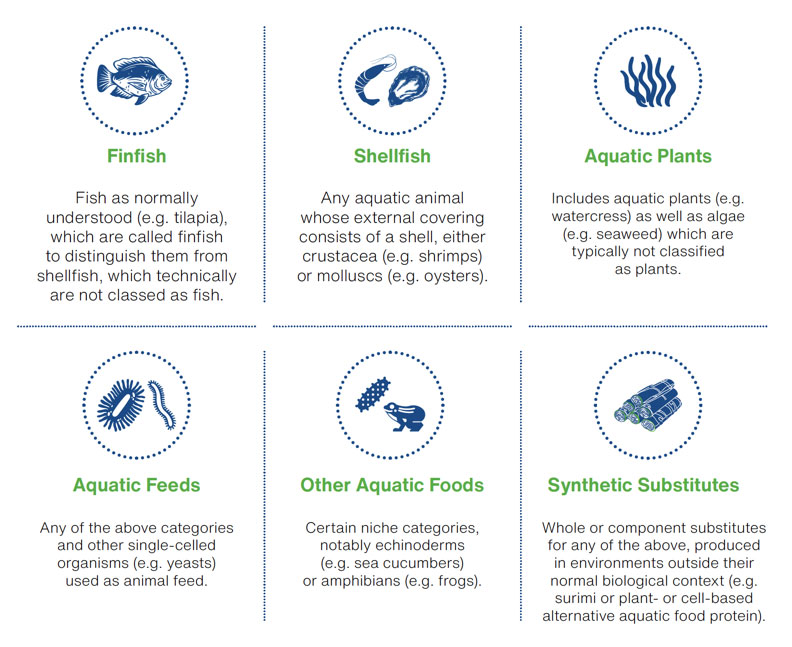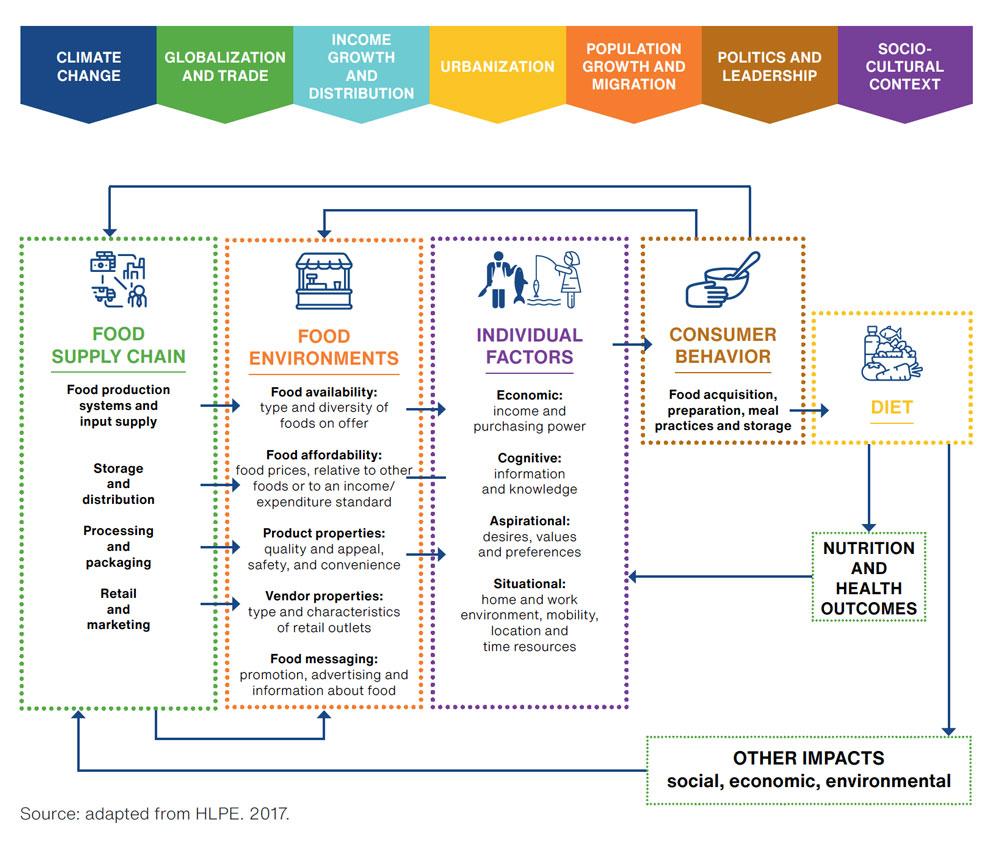Aquatic foods are central to the livelihoods, food and nutrition security of more than 800 million people in developing countries – particularly those vulnerable to climate change, poverty, conflict and humanitarian emergencies
They include animals and plants grown in or harvested from water, and their synthetic substitutes. Whether caught in oceans, lakes and rivers or sustainably farmed, aquatic foods release less carbon than land-based crops and livestock. Packed with vitamins, minerals and healthy fats, aquatic foods are healthy for people and the planet.

The importance of all aquatic foods is slowly being recognized. 3.3 billion people obtain 20% of their animal protein from aquatic foods and 60 million people are engaged in the fisheries and aquaculture sectors. Fish is among the world’s most valuable items of global trade, worth USD 164 billion in 2018.
Aquatic food systems
An aquatic food system is the complex web of all the elements and activities that relate to foods from water, along with parts of the broader economic, social and natural environments in which they are embedded. It encompasses the steps from production all the way to consumption, as well as outcomes related to nutrition, public health, food security, social and economic prosperity, and environmental sustainability.
Aquatic food systems have enormous potential as a lever for transformation toward a more sustainable and equitable global food system.

An aquatic food system is sustainable when it ensures food security and nutrition for all in such a way that does not compromise the economic, social and environmental bases to generate food security and nutrition for future generations.
With more investment in better management and technological innovation, the ocean and related aquatic food systems can provide over six times more food than they do today. This would be more than two-thirds of the animal protein needed to feed the future global population (Costello et al. 2020).
Our research on aquatic food systems is critical to meeting shared global aspirations for establishing inclusive, efficient, sustainable, nutritious and healthy food systems capable of achieving the SDGs by 2030.